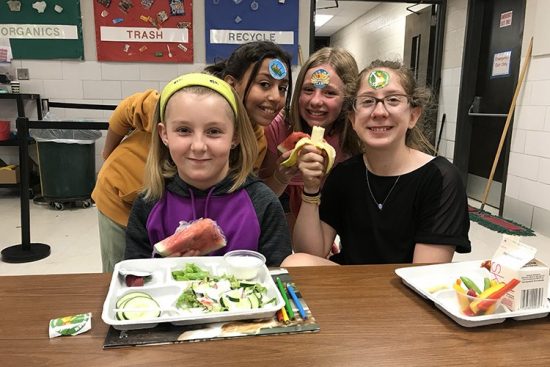Transform School Lunch
Good eats at school
Get to know the importance of building a healthier school food culture, because you’re going to need some serious knowledge—and patience—if you want to get involved with improving school meals. Of all the areas of school that might just be the toughest to impact, school breakfast and lunch take the cake, or the tater tot, as it were. The cafeteria is the most highly regulated place in the school, with rules that come down from the federal, state and district levels. The school meal program is a complicated system that’s tough to navigate if you’re not in the trenches. But since when did “complicated” stop us? Pffft.
Whatever you do, do not go marching into the school cafeteria and offer your cooking tips for homemade lasagna or kale chips. How would you feel if your partner or mother-in-law criticized your cooking? Food is personal, and school cafeteria staff work hard and take their jobs to heart.
Here are six tips to keep in mind if you want to become a lunchroom hero:
- Chit Chat. Get to know your food service manager. Stop in for a quick chit chat (not complaints) after drop-off or pick-up.
- Get in line! Did you know there is a National Take Your Parent to Lunch Day? It’s in October every year, so mark your calendar, get in line, buy school lunch and grab a seat in the cafeteria with your child!
- Ask and Listen. Have concerns about what’s in a meal? Ask questions and get in the know before sharing critiques.
- Make a Statement. Show off your artsy self and offer to decorate a healthy-eating themed bulletin board in or near the cafeteria.
- Think Local. Do you volunteer with the school garden? Or have a relationship with a local farm? Talk to your food service manager to see what it would take to get garden produce on the lunch line. It doesn’t get more local than that.
- Step it Up: Once you’ve gotten chummy with school nutrition staff, partner with them to do a Smarter Lunchrooms Self-Assessment Scorecard. The scorecard has 60 strategies that lunchrooms can use to nudge kids toward healthier choices. See what your kid’s school is already doing and choose a few things to do even better.

Food service managers are not unlike parents when it comes to the challenges of getting kids to eat a healthy meal or try new foods. They want to make sure they’re serving meals that kids enjoy AND they don’t like to see food wasted. If they think that students will be less likely to buy healthier meals or will toss the veggies, they will be hesitant to incorporate changes. With that in mind, here are additional suggestions for school lunch transformation.
- While getting to know school nutrition personnel, express interest in learning about how school meals work and the challenges they face.
- Familiarize yourself with the nutrition standards that your district is required to follow at the federal, state and local level.
- Focus on maintaining or increasing participation as an essential part of your efforts to improve school meals.
- Marketing with posters and flyers at back-to-school night, taste tests with students and improving the cafeteria environment can go a long way.
- Add a salad bar, which gives students more options to choose healthy foods on their own.
- Explore farm-to-cafeteria programs that can bring fresh, local produce and build bridges to the community and new learning opportunities for students.
- Make sure your school offers nutrition education to all students so they are selecting the healthy items in the cafeteria (and not demanding unhealthy items).
Watch how mom Lynne Cody transformed school lunch in her rural CO town, and read an article about her journey here.
Categories: Making Change Happen, Meals & Nutrition